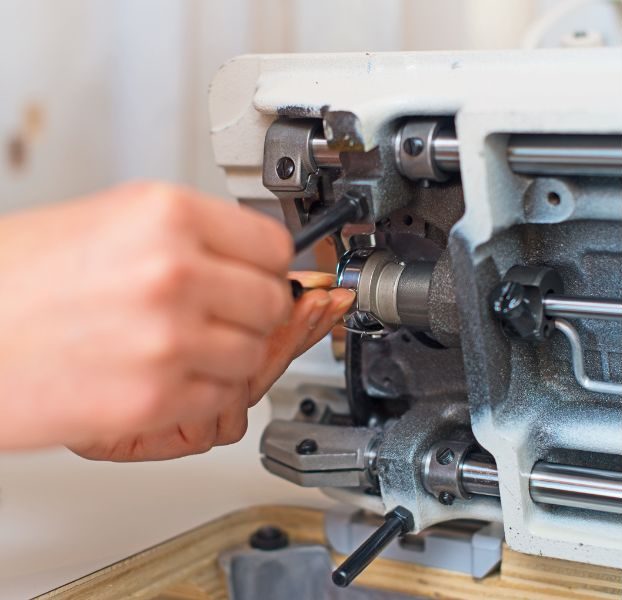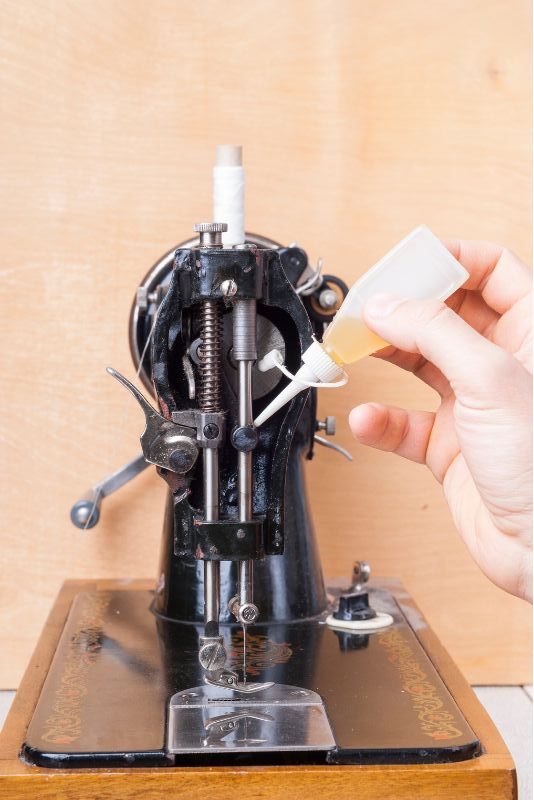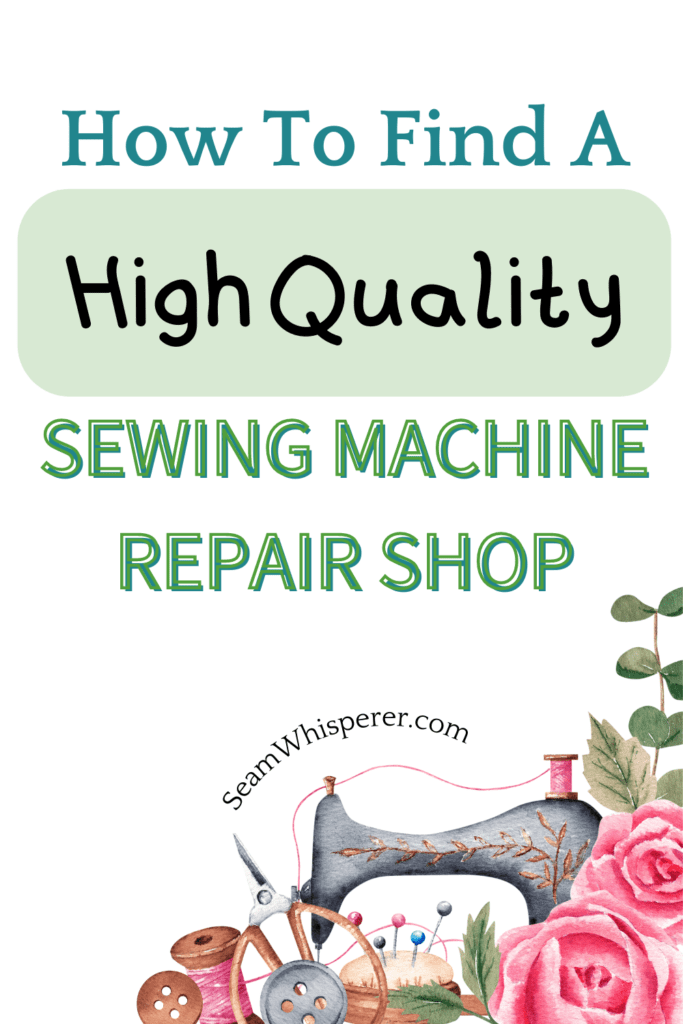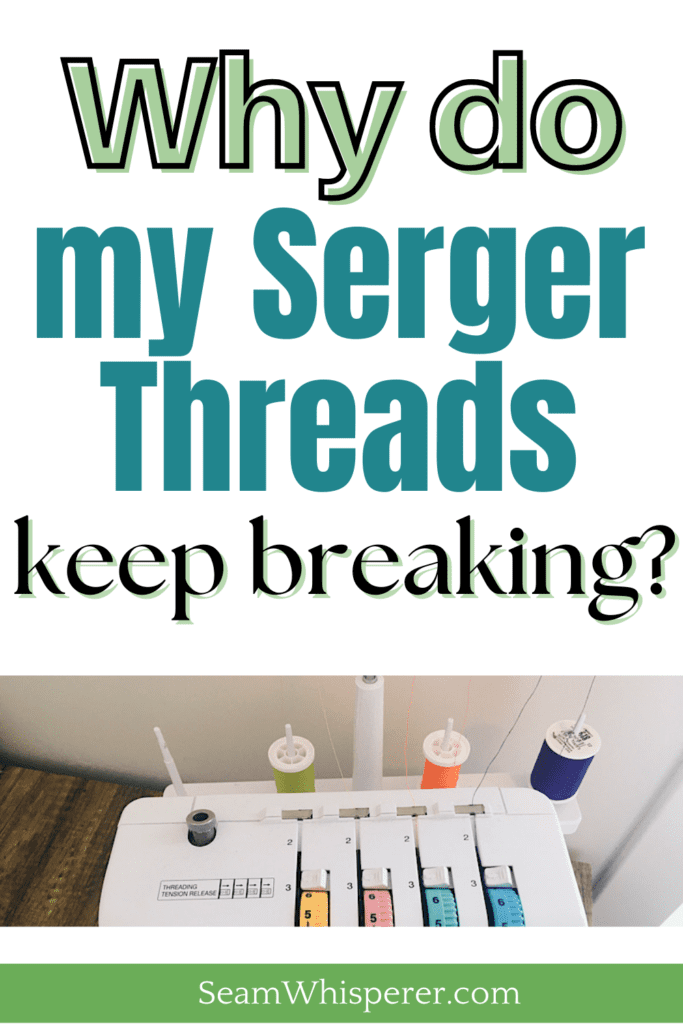It seems like finding a sewing machine repair shop is getting harder and harder. Here are some ideas of where you can look to get yours fixed quick!
This post may contain affiliate links. Read the full disclosure here.
Check This First If Your Machine Is Broken:
FIRST, before rushing to the sewing machine repair store, I just want to go over a few things you can check on. If you can avoid going in for repair, you will save time and money.
If you have a broken sewing machine, the very first thing you should do is check your user manual’s “Troubleshooting” page. This page quickly summarizes common machine problems and how to fix them yourself. Most simple sewing machine errors can probably be fixed by checking the troubleshooting guide, saving time and money.
For example, if your problem is “The sewing machine doesn’t work”, some things to check might be:
- check that the bobbin winder is not pushed to the right
- check that the presser foot is lowered
- and of course, make sure the machine is plugged in 🙂
Do yourself a favor and really double check all the tips in the troubleshooting guide instead of running straight to the repair shop! You might be surprised at how simple a fix it really is. And you don’t want to risk wasting all that time and money on something so easy.
BUT, if your machine really does need professional help, here are the three places I recommend looking to find your own local sewing machine repair services:

Where To Get Your Sewing Machine Fixed
1. Warranty Service Providers
Before googling anything, don’t forget to check your machine’s warranty! If you are the original owner of the sewing machine, have purchased it from an authorized retailer, and have not altered the machine in any way AND you are still within the warranty time frame, your repairs may be covered under the warranty policy.
It is important to note that warranties are not the same thing as product insurance, and they won’t cover everything wrong with your machine. Normally, a warranty will cover costs associated with repairing a machine that was defective, not a machine that is just old.
Some common things that are NOT covered in warranties include:
- Physical Damage from improper use
- Damage from neglecting to maintain your machine
- Damage or loss of consumable parts (such as needles, bobbins, etc.)
Many sewing machine warranties have multiple warranty periods. For example, Brother sewing machines have a 1 year warranty for the machine, a 5 year warranty for the circuit boards, and a 25 year warranty for the Chassis unit.
If you think your machine qualifies for warranty service, contact the manufactorer with the instructions in their warranty. They will tell how how and where to take your machine (usually to an authorized service center of some kind) and the machine will be repaired or replaced for you at no charge.
2. Small Appliance Repair Shops
Did you know that sewing machines are considered a small household appliances?
That means that many Sewing Machine Repair shops fix both sewing machines and vacuums. Some Appliance Service Technicians can also repair other household appliances like refrigerators.
If you’re struggling to find a specific sewing repair store, it could be worth calling a general appliance repair shop and asking if they also service sewing machines.
3. Use Who The Pros Use
Chances are, there are sewing professionals in your area who maintain and repair their machines and can give you references. If a professional can recommend a repair shop to you, it is probably a shop they have experience with and trust! These high quality repair shops are the ones you want to look for.
So who do you ask for these tips? Here are a few ideas:
Quilting and Embroidery Shops
If there are quilting shops in your area, or even embroidery shops, they will have lots of machines that need frequent care. Reach out and explain that you are looking for a service shop for your sewing machine, and want to know where they service their machines!
In addition, some quilting shops may even offer basic maintenance in their own stores.
Universities and Colleges
The sewing department at many local universities and colleges have hundreds of different types of sewing machines that are used constantly. These machines need quick and good care! Call and ask the department if they have any ideas on where you should take your sewing machine.
Or, perhaps they have their own machine repair staff that is able to service community member’s machines for a fee!
Local Tailors
Don’t have any quilt shops around? Look for a local tailoring shop, mens suit botique, dress shop, or even an in-home tailor. They will probably have great resources for you to find a high quality sewing machine repair shop!

More people to ask for references:
You can also ask the craft store you buy your machine or fabric from, or even post it on Facebook and see if any of your friends know of a good place where you can fix your sewing machine.
Additional Sewing Machine Repair Tips
I want to go over a few last tips you should consider before ending this post.
How much does it cost to repair a sewing machine?
I analyzed the prices from multiple sewing machine repair shops and found that the price for sewing machine repairs vary from around $35 to $200. Repair costs often don’t include extra parts charges, and many shops offer free estimates beforehand.
Prices increase if you need the repair done the same day, or if older machines need extensive restoration. Some locations also offer services calls and will come to your home for a fee to fix your machine.
Get multiple quotes
If you find multiple sewing machine repair shop options near you and you don’t know where to go, I recommend you call them all! There is nothing wrong with calling multiple shops and getting a feel for them. It is a good idea to get multiple quotes so that you can compare their services.
Perhaps one includes bonus items in the service that other shops don’t!
Carefully Consider DIY repairs
One great thing about the internet for sew-ers is that there are many how-to guides available! You might be able to find a blog post or video that can help you troubleshoot and repair your own machine.
However, DIY maintenance and repairs should always be done with caution. If you damage your machine, it is your fault!
Prevent breakage in the first place
Make sure you are familiar with how to use your sewing machine properly (such as knowing which presser feet to use, knowing all the basic parts and their names, and using the right needles for the job so that they don’t break!).
There are lots of troubleshooting articles on this site, and DIY tutorials on Youtube you can use too.
In addition, don’t forget to regularly maintain your machine. Your sewing machine user manual should have a maintenance section that you should read and follow. The simple steps of cleaning your bobbin case from lint, properly replacing the light bulb, etc. can go a long way in keeping your machine functional.
Conclusion
I hope these tips have helped you learn where you can look to find a great repair shop for your sewing machine. Whether it is thrifted, antique, or brand new, a Singer, Kenmore, or Bernina, sewing machines are meant to last a long time with proper care.
So make sure to find a high quality repair shop near you and treat your machine right!
New to your sewing machine? Here is my guide on how to find a local sewing class! And make sure to join my email list for more beginner tips.






I’m glad you talked about checking the “Troubleshooting” page of your user manual as soon as possible if your sewing machine breaks. I couldn’t figure out how to operate our sewing machine. To get my sewing machine back to working properly, I’ll surely heed your helpful advice regarding sewing machine repair.